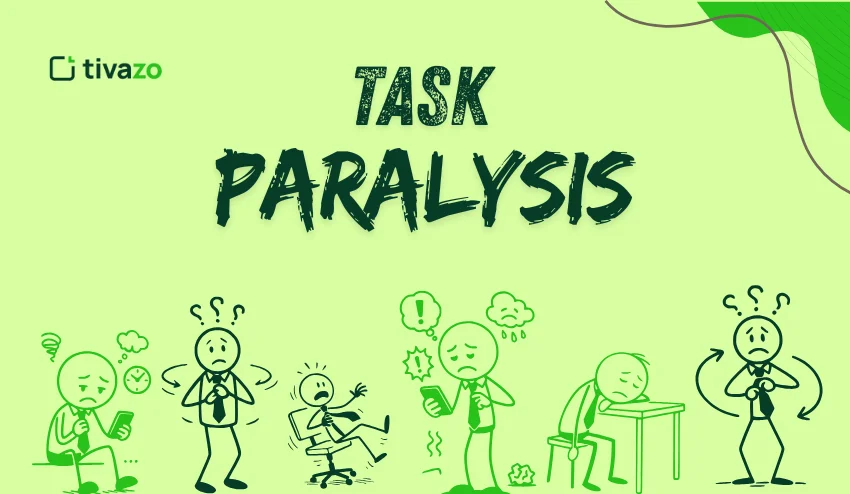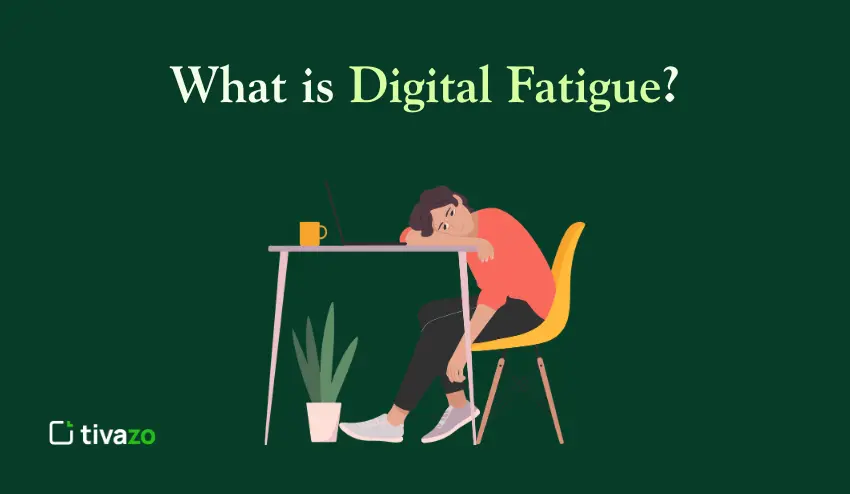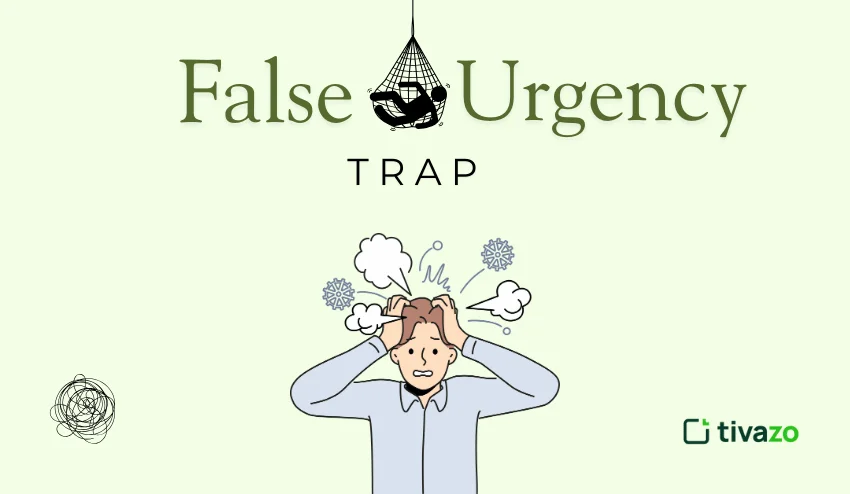We’ve all found ourselves dealing with an overflowing to-do list, too many tabs open, and too many choices piling up – and then we freeze. That feeling of being stuck? That’s called task paralysis. It’s not the same thing as procrastination or being lazy. By the end of this deep dive, you will have a better understanding of what task paralysis is, what causes it (especially in people with ADHD), how it impacts work and life, and how to overcome it with actionable ways forward.
If you’ve struggled to get started on day-to-day responsibilities, are managing a team that is grinding to a halt, or are just curious about why someone gets “stuck,” it’ll help you better understand task paralysis and overcome it using methods backed by research.
What Does Task Paralysis Mean in the Workplace?
Task paralysis can be defined as a difficulty or inability to start, continue, or finish a task, even if the person wants to. It can feel like a total mental freeze, overwhelm, an inability to move forward, or being “stuck.” In other words, the person has the capacity and intention to act but is immobilized. While procrastination is usually about avoiding starting or completing a task (often due to avoiding discomfort), task paralysis is often, as the term implies, a paralysis that results from an underlying cognitive or emotional difficulty.
Task paralysis can look like:
- Ability to stare at the task, but unable to settle on the next steps
- Making or re-making decisions
- Not finishing a task after engaging for several hours
- Finally moving onto a more trivial task (like email or small busywork) to avoid what really needs to be done.
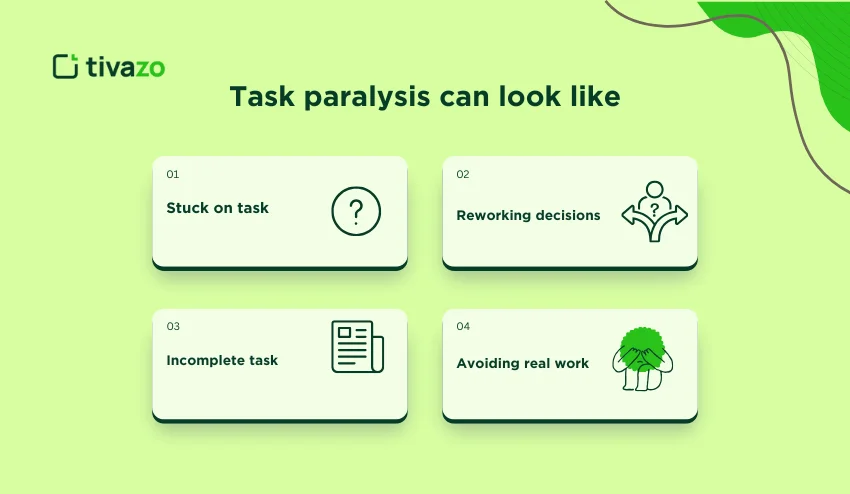
According to Medical News Today, “task paralysis” is “an inability to start or complete a task due to an overwhelming feeling or sense of being overwhelmed.” It kills productivity and is not specific to underperformers. A high-performing employee can experience task paralysis. In fact, task paralysis can lead to delays in project completion, impede innovation, and create bottleneck situations that impact the work of an entire team.
Often, employees will describe feeling mentally exhausted, questioning and doubting even simple next steps, and generally being unable to focus long enough to complete even simple steps, leading to frustration, guilt, and more feelings of burnout, especially when it becomes a regular occurrence.
Understanding Task Paralysis
Task Paralysis vs. Procrastination vs. Analysis Paralysis
| Concept Definition | Core Issue | Key Difference |
| Task Paralysis | Inability to start or complete a task even when motivation exists. | Originates in overwhelm, freeze response, or executive functioning challenges. |
| Procrastination | Willfully delaying or avoiding task completion for comfort or avoidance. | More conscious choice; often related to mood, motivation, or fear. |
| Analysis Paralysis | Stuck in decision-making and overthinking, unable to commit. | A type of paralysis that focuses on choices, comparisons, and overthinking. |
It is important to see the difference between “analysis paralysis” and “task paralysis,” which are often used interchangeably. Analysis paralysis is typically found within the decision-making phase, while task paralysis extends beyond that phase and involves the decision and the execution of that decision. In other words, someone with task paralysis may know exactly what they need to do, yet they still feel unable to do it.
Task paralysis can be described as a cognitive lock-up where logical thinking collides with emotional overwhelm. Understanding the distinction is important: strategies to manage procrastination and overthinking will not necessarily be useful in task paralysis, which often necessitates emotional regulation systems, structured, and incremental momentum-based strategies.
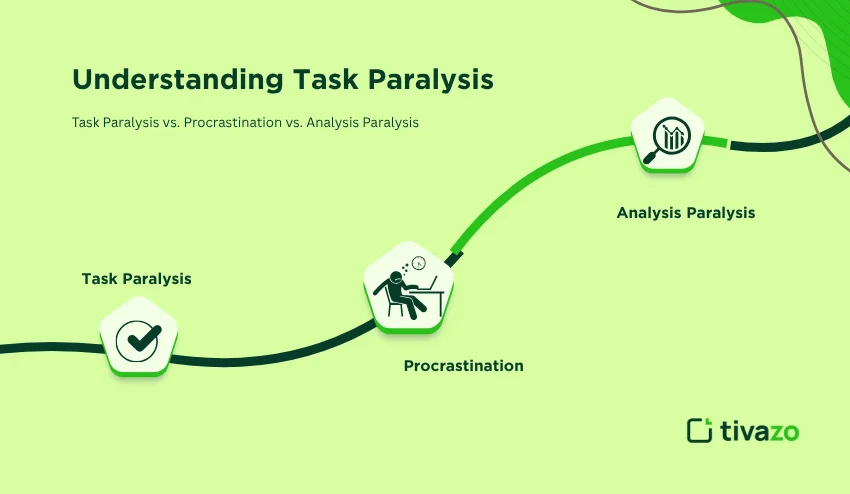
What Exactly Is ADHD Task Paralysis?
Individuals with ADHD commonly experience task paralysis. Some key ideas include:
- Also known as ADHD paralysis, freezing mode, or shutdown.
- It is a product of executive dysfunction; planning, organizing, and prioritizing tasks is difficult.
- It is largely brought on by feelings of overwhelm stemming from the volume of tasks, uncertainty, or emotional overload.
- Clinicians have identified three types of task paralysis: task paralysis, choice paralysis, and mental paralysis.
- It’s no surprise that even a routine task can feel overwhelming and insurmountable to an individual with ADHD, often leading to feelings of guilt or frustration.
- Feeling paralyzed repeatedly is often detrimental to self-confidence, professional growth, and daily functioning.
- Understanding ADHD task paralysis will help practitioners and family support implement strategies to create structured environments that help individuals with ADHD eliminate overwhelm and foster a workflow that is manageable.
- Small, incremental progress will help generate a sense of momentum and make it less likely for an individual to stay locked in a “freeze” episode over and over again.
In practice, an individual with ADHD will likely want to engage in action, yet the brain “locks” partly because of the effort it takes to initiate and/or sustain action in terms of mental effort. This can lead to even the simplest and most routine of tasks feeling overwhelming and, hence, lead to frustration, guilt, and an escalation of stress.
Over time, the cycle of ADHD task paralysis is likely to affect self-confidence, professional growth, and daily functioning. It is important to understand the ‘paralysis’ component to figure out a plan to create manageable tasks that lessen anxiety and slowly foster progress, no matter how small.
Factors Contributing to Task Paralysis
There are a variety of interconnected factors contributing to task paralysis. It is rarely just one thing. Knowing those will help us build more specific interventions around task paralysis.
1. Executive Dysfunction & Feeling Overwhelmed
When core executive functions or thinking, like planning, prioritizing, or task switching, are at capacity, our brain can stop. Executive dysfunction leads directly to task paralysis.
2. Fear of Failure / Perfectionism
When a task feels too big, risky, or uncertain, the fear of doing that task “incorrectly” gets in the way of starting. Perfectionism often is a reason for task paralysis.
3. Sensory & Cognitive Overload
Too much sensory input, too much internal dialogue, or demands to do multiple things at once can overwhelm the brain and cause shutdown.
4. Not Enough Reward / Low Stimulation
Some people (particularly people with ADHD) may need a higher level of stimulation (dopamine) to “get started.” When the brain does not feel a reward, it stalls and continues to stall.
5. Emotional Factors (Anxiety, Shame, Low Self-Esteem)
Personal emotional stressors or shame, negative feelings about oneself, can block motivation and contribute to a freeze response.
6. Lack of Structure or Ambiguous Tasks
Trying to start tasks with little structure, clarity, and steps makes it even easier to feel lost and unable to start.
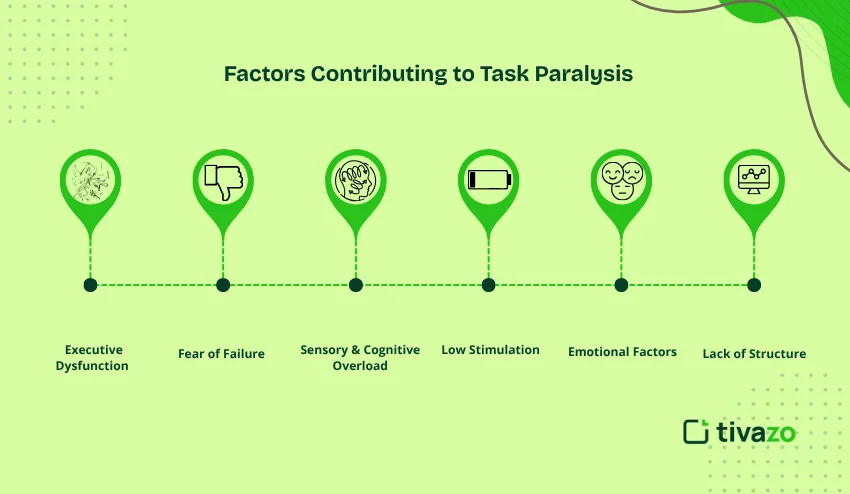
Effects and Consequences of Task Paralysis
If left unchecked, task paralysis can have a ripple effect in many areas:
- Reduced productivity, missed deadlines, or lost opportunities – When tasks pile up and remain undone, projects become stalled. Personal or professional objectives may fall victim to inertia as well.
- Chronic stress, frustration, guilt, and diminished self-confidence – Feeling unable to act when knowing action is warranted is a chronic source of inadequacy and mental strain.
- Negative team performance effects – One team member who is stuck can pack a collaborative project down to a slow crawl, place the burden of work on others, and create tension as a result.
- Chained procrastination cycles, burnout, or learned helplessness – When the paralysis happens many times, the ease of avoidance reinforces paralysis and becomes automatic when the time to get moving again comes.
- Aggravation of comorbid conditions in populations with ADHD – Charitable when comments reflect anxiety, depression, and other mental health concerns, less observable than task paralysis, but just as debilitating.
Further effects that come with paralysis include the following:
- Diminished creativity and innovation – When the mind is preoccupied with feeling blocked or paralyzed, there is less available mental space to generate new ideas and develop solutions to problems.
- Decision fatigue – The incapacitating nature of a trend towards paralysis leads to perpetual thinking and re-thinking, which ultimately will diminish your cognitive capacity and mental muscle and stand between you and decision-making, especially as you move forward.
- Negative relational impact – Coworkers may confuse paralysis as a lack of effort and commitment to the organization, which will further complicate professional relationships, and possibly erosion of trust in your working relationships.
- Long-term consequences to career – Continued task paralysis may have an impact on your performance appraisals, promotions, and career advancement.
It is vital to recognize task paralysis, intervene early, and take corrective actions to facilitate productivity, mental health, and promote positive, healthy working relationships.
How to Overcome Procrastination
Here are 7 viable means of freeing yourself. Take what resonates with your style and set of circumstances or your team.
1. Take Tasks to Micro Steps
Decompose larger, complex tasks into smaller subtasks (e.g., open file → write title → write first sentence). Usually, micro-steps require much smaller activation costs, negating some of the initial inertia to act.
2. Create Clarity in Prioritization & Limit WIP
Focus on 1–2 tasks that are important at a time: use a matrix of “Important versus Urgent.” Having fewer demands on your time reduces the cognitive load of all tasks at once.
3. Time-box and Use a Pomodoro Method
Work in small bursts (e.g., 15–25 minutes) with a scheduled break. The urgency and structure help to propel one toward action and sustain progress while working.
4. Use Body Doubling / Accountability Partner
Work next to someone (in person or virtually) who will either engage in co-working or do silent check-ins. Simply being in the presence of an outside person helps with “sticking” the brain.
5. Build in Reward and Gamification
Provide even a small reward for yourself (break, snack, stretch) after you have completed a micro-step on your checklist. Extrinsic rewards stimulate dopamine feedback loops in the brain refined by use of use of the smartphone.
6. Precommit and Create Implementation Intention Statements
Make rules for yourself in the form of “If X, then I will do Y”. For example, if it is 9:00 am, I will open this document. Giving a pre-commitment takes away the decision delay of the task. (Structure = Force).
7. Utilize Time Tracking & Tool-Based Guardrails
Keeping track of time and tasks aids visibility, accountability, and feedback loops. A time tracking tool like Tivazo can help keep track of time spent, identify overload areas, and craft a more realistic workload (more to follow).
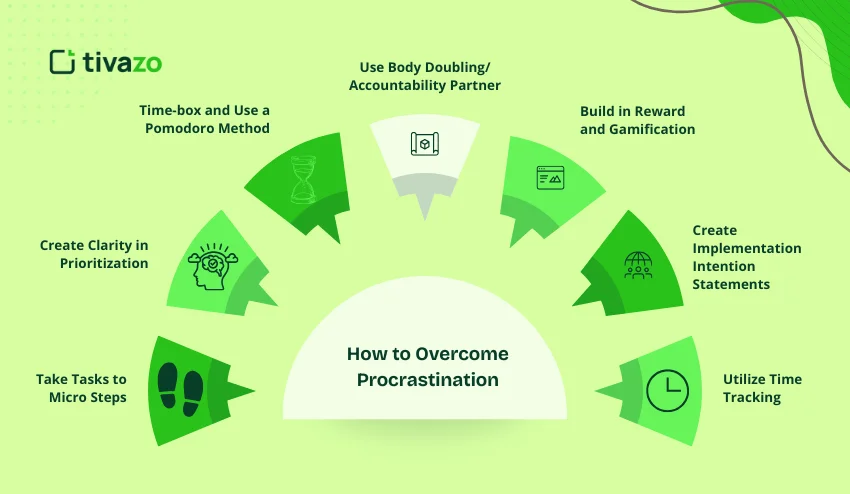
How to Minimize Task Saturation
Task saturation is when there are too many tasks building up in the queue, creating pressure and a higher chance of paralysis. Ways to avoid it:
- Weekly triage: look through your list, cancel, and defer low-value tasks
- “Stop doing” lists (tasks you will no longer be doing)
- Dedicate focus time blocks in your calendar
- Limits on new work (batching, gatekeeping new tasks)
- Delegate or automate regular, recurring tasks
- Adopt buffer zones: don’t schedule back-to-back
- Prevention is about managing your capacity load in your mind.
How a Time Tracking Tool Like Tivazo Can Help with Task Paralysis at Work
A time tracking tool that is thoughtfully designed does more than simply track time; it serves as a tactical lever to prevent task paralysis. Here’s how:
- Visibility into Where Time is Spent: Numerous metrics can showcase which tasks are expensive in terms of mental effort, which ones you might be avoiding, and if some categories of tasks (meetings, admin, execution) are sucking up all of your time.
- Identifying Overload & Bottlenecks: By tracking planned time versus actual time, you can detect when experiences of over-full or overwhelmed become recurrent. Early warning signs of possible paralysis points in your queue in your day.
- Forcing Realistic Estimates & Feedback Loops: When you see yourself estimating the time of a task versus how long it actually takes, it requires you to self-assess what your real work rate is. This further aids you to chunk the task into “do-able” portions, thus taking pressure off yourself.
- Accountability & Momentum: It feels good seeing time build on a task, and what it can do for productivity is motivate you to continue moving forward (even if it’s in small steps).
- Pattern Analysis & Adjustments: After several weeks, the tracking will show patterns of consistent stoppages, working overtime, or wasted time- giving you alternative chances for shifting your work practice for productivity.
- Team-Level Insights (for managers): If you’re leading a team, looking at the data will show you the blockers, where it seems that a task stalls out, or who else may need assistance to feel or stay engaged-instead of micromanaging and having checkpoints through every step. will help you manage your team (and workload) better.
When you pair knowing what to track with thinking, it will help you manage backward as it relates to time with each of the listed examples, and if it’s taken its toll, begin to scaffold and prevent task paralysis before it sets in.
Conclusion
Task paralysis refers to either the inability to initiate or complete a task, even when one is both physically and psychologically able. It can be caused by a myriad of reasons, including bureaucratic overwhelm, executive dysfunction, and emotional overload. It can be most severe in people living with ADHD, leading to a phenomenon called “freeze” or the inability to act, as well as other shutdowns. The consequences often include loss of productivity, burnout, and increased stress, and often negatively affect those around you as well.
Getting past task paralysis typically involves one or more of the following strategies: breaking the task down into micromovements, prioritizing what needs to get done, time-blocking a task, getting an accountability partner, and using an app like Tivazo to track workload. With teams, early recognition and applying structured, anticipatory strategies can often help recover momentum and sustain productivity.
